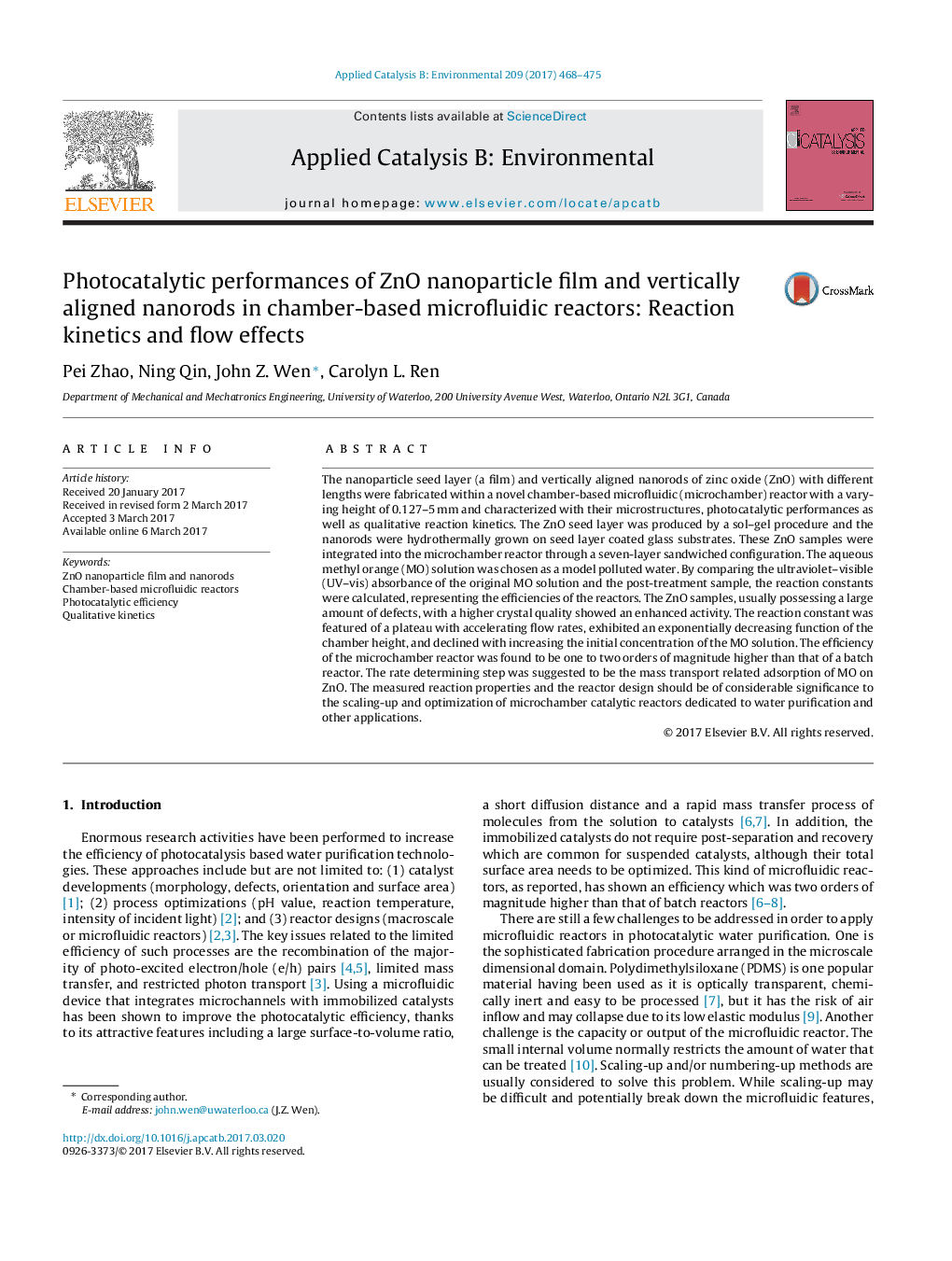| کد مقاله | کد نشریه | سال انتشار | مقاله انگلیسی | نسخه تمام متن |
|---|---|---|---|---|
| 6454207 | 1418811 | 2017 | 8 صفحه PDF | دانلود رایگان |

- A new chamber-based microfluidic reactor is designed for photocatalytic reaction.
- Qualitative kinetics of photocatalytic oxidation in the microchamber is proposed.
- The rate determining step is the mass transport related adsorption.
- Flow rate, reactor height, dye concentration and ZnO property determine the rate.
The nanoparticle seed layer (a film) and vertically aligned nanorods of zinc oxide (ZnO) with different lengths were fabricated within a novel chamber-based microfluidic (microchamber) reactor with a varying height of 0.127-5Â mm and characterized with their microstructures, photocatalytic performances as well as qualitative reaction kinetics. The ZnO seed layer was produced by a sol-gel procedure and the nanorods were hydrothermally grown on seed layer coated glass substrates. These ZnO samples were integrated into the microchamber reactor through a seven-layer sandwiched configuration. The aqueous methyl orange (MO) solution was chosen as a model polluted water. By comparing the ultraviolet-visible (UV-vis) absorbance of the original MO solution and the post-treatment sample, the reaction constants were calculated, representing the efficiencies of the reactors. The ZnO samples, usually possessing a large amount of defects, with a higher crystal quality showed an enhanced activity. The reaction constant was featured of a plateau with accelerating flow rates, exhibited an exponentially decreasing function of the chamber height, and declined with increasing the initial concentration of the MO solution. The efficiency of the microchamber reactor was found to be one to two orders of magnitude higher than that of a batch reactor. The rate determining step was suggested to be the mass transport related adsorption of MO on ZnO. The measured reaction properties and the reactor design should be of considerable significance to the scaling-up and optimization of microchamber catalytic reactors dedicated to water purification and other applications.
84
Journal: Applied Catalysis B: Environmental - Volume 209, 15 July 2017, Pages 468-475